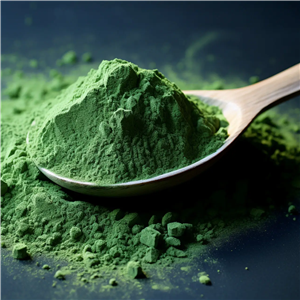How ALA work and it's Clinical Summary
Alpha-lipoic acid is an antioxidant. Although there is some evidence it may help treat conditions related to diabetes, confirming studies are needed.
Alpha lipoic acid (ALA) is a compound naturally produced by the body that acts as a cofactor in the production of energy. It is often referred to and marketed as a universal antioxidant. Lab studies show that ALA and its metabolite, dihydrolipoic acid (DHLA), have chelating, scavenging, and protective properties. In addition, DHLA is able to repair oxidative damage and regenerate antioxidants such as vitamin C, vitamin E, and glutathione.
Some studies in humans suggest that ALA may help improve liver function, blood sugar levels, and reduce nerve damage caused by diabetes. However, additional studies are needed to confirm safety and effectiveness.
Alpha lipoic acid (ALA) is an endogenous cofactor found in cells that can also be obtained in the diet. It is sometimes referred to as a “universal antioxidant” because it is both water- and fat-soluble and can neutralize reactive oxygen species. It is marketed as a dietary supplement for this reason, and is also used as adjuvant therapy for neuropathy and to improve glycemic control. Preclinical studies show that ALA plays a crucial role in energy production, and exerts antioxidant and apoptotic effects.
Studies on ALA in humans have been conducted across various populations. Preliminary data suggest long-term supplementation may help preserve walking ability in patients with secondary progressive multiple sclerosis, especially those with less disability at baseline. Studies of intravenous and oral forms suggest improved insulin sensitivity, vasodilation, and neuropathy symptoms in diabetic patients, although earlier studies to determine its role in reversing neuropathies and liver disease, produced mixed results. In women with gestational diabetes, oral ALA may improve liver function and glucose metabolism. Meta-analyses also suggest ALA supplementation may reduce inflammatory mediators such as CRP, IL-6, TNF-α, and improve some glucose and lipid parameters, but confirming studies are needed.
In other preliminary studies, ALA induced mild weight loss and waist circumference reduction in overweight or obese subjects. It also improved wound healing and scarring in women undergoing cesarean section, and reduced postsurgical pain after carpal tunnel decompression. In patients with atrial fibrillation, it reduced serum markers of inflammation, but not AF recurrence after ablative treatment.
Although current data suggest protective effects of antioxidants against Alzheimer’s disease, similar effects were not found with a combination of, and ALA. Topical application with creams containing ALA may help prevent photoaging of facial skin.
High doses of ALA can cause hypoglycemic symptoms, as well as other serious conditions. In addition, because of its antioxidant effects, ALA may antagonize the effects of chemotherapy and radiation therapy.




